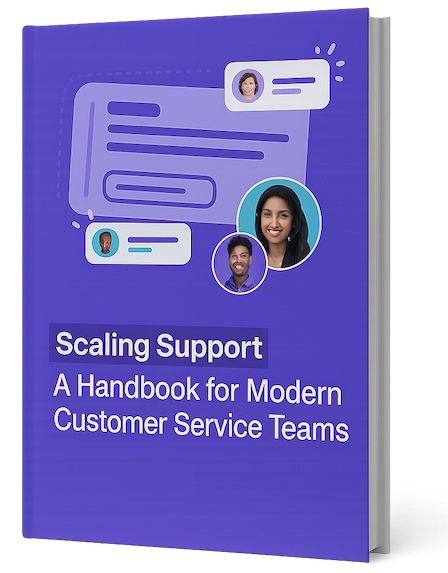Transforming Customer Feedback into Business Value
Understanding what your customers truly think and feel has become fundamental to business success. Customer feedback flows in continuously through reviews, social media, support tickets, and direct communications. This wealth of input holds the keys to growth and loyalty – but making sense of it all remains a significant challenge for most organizations.
Modern feedback analysis tools have changed the game. Using advanced text analysis and AI capabilities, these platforms can now process massive amounts of customer input automatically. What used to take weeks of manual review can now be analyzed in minutes, uncovering key patterns and sentiments that drive real improvements.
Effective analysis is about more than just collecting data – it's about understanding the emotions and meanings behind customer comments, identifying recurring themes, and turning those insights into concrete action plans. The right tools make this possible at scale.
This guide will help customer service leaders, support managers, business owners and CX professionals select the optimal feedback analysis solution for their needs. We'll examine 10 leading platforms that can strengthen your customer experience strategy and help you better serve your audience. Let's explore how to transform raw feedback into a clear path forward.
1. Supportman
Tettra, which recently acquired Supportman, helps customer support teams get more value from their Intercom conversations. The tool sends real-time customer feedback directly to Slack, helping managers and team leaders quickly respond to both positive and negative customer experiences. This creates a fast feedback cycle for spotting trends and improving service quality.
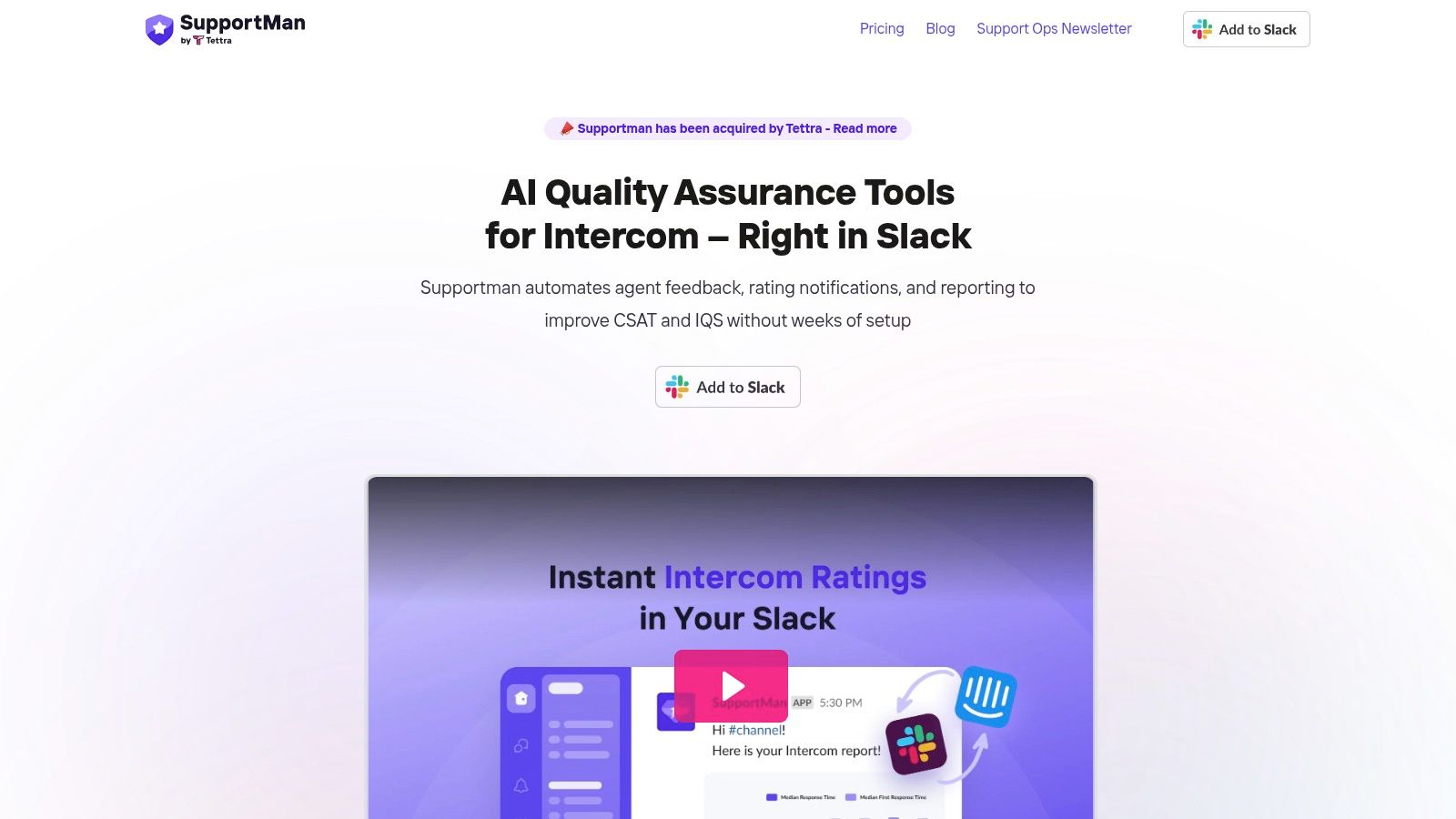
Here's a common scenario: A customer leaves a negative rating after a support interaction. With Supportman, that feedback immediately appears in your Slack channel, letting your team address the issue right away. Similarly, positive ratings help highlight great agent performance. This quick feedback helps teams respond faster and deliver better service.
The tool uses AI-powered Internal Quality Scoring (IQS) to evaluate support conversations based on your custom criteria. This provides specific feedback to help agents improve. You might be interested in: [How to Create Effective Customer Service Rubrics]. Weekly reports summarize key metrics, eliminating constant dashboard checks. For more details about available data, see the Supportman sitemap.
Key Features:
- Instant Intercom Feedback in Slack: Get customer ratings immediately
- AI Quality Scoring: Evaluate conversations with custom criteria
- Weekly Performance Reports: Track important metrics automatically
- Intercom Integration: Connect support with other teams seamlessly
Pros:
- Real-time notifications in Slack
- AI-powered conversation scoring
- Detailed weekly reporting
- Easy Intercom integration
- Free trial available (no credit card needed)
Cons:
- Requires both Intercom and Slack
- Limited public pricing info
Setup Process:
Getting started with Supportman is straightforward. While specific technical requirements aren't listed publicly, you'll need active Intercom and Slack accounts. The free trial lets you test the features without any commitment.
For teams using Intercom and Slack, Supportman provides a valuable way to analyze customer feedback, coach support agents, and improve satisfaction. You can learn more and start a free trial at Supportman's website. See also: [Best Practices for Integrating Customer Feedback into Your Workflow].
2. Qualtrics
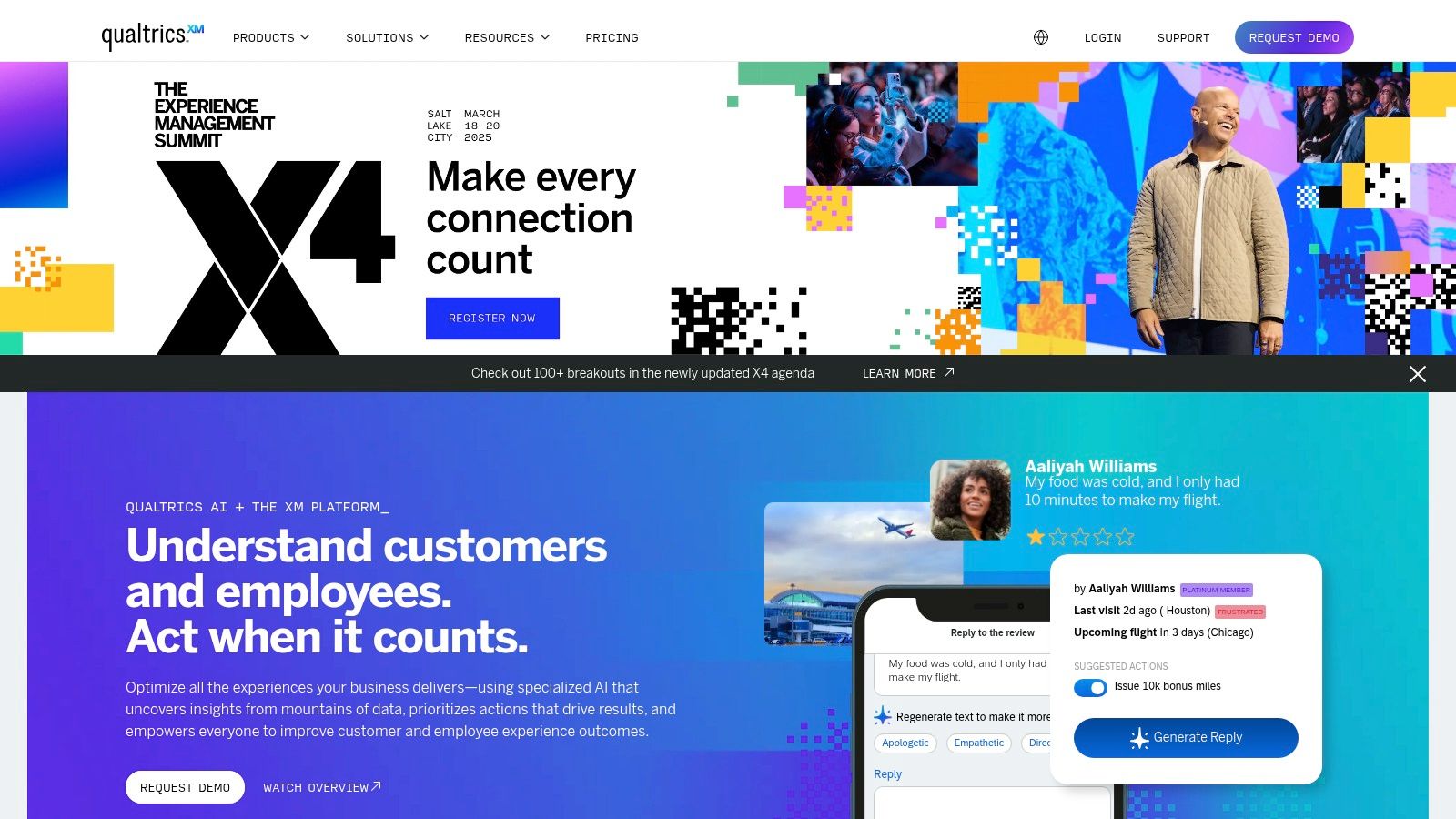
Qualtrics is a powerful experience management (XM) platform that helps organizations collect and analyze in-depth customer feedback. It goes beyond basic surveys by offering tools to gather and act on customer data across multiple touchpoints. Customer Service Managers, CX Directors, and business owners use Qualtrics to make data-backed decisions about customer experience improvements.
Common Uses & Applications:
- Track Customer Satisfaction: Create targeted surveys to measure CSAT, NPS, and CES scores. Monitor trends and find areas that need improvement.
- Product Development: Get direct feedback on features and usability to guide your product roadmap.
- Employee Experience: Measure employee satisfaction and engagement to build a better workplace culture.
- Market Research: Run thorough studies on concepts, products, and brand perception.
- Brand Monitoring: Keep tabs on brand awareness and sentiment, spotting risks and opportunities.
Core Features:
- Smart Survey Logic: Build surveys that adjust based on responses for a more personal experience.
- Live Data Analysis: See results as they come in and quickly spot important patterns.
- AI Text Analysis: Automatically process open-ended responses to find key themes and feelings.
- Custom Dashboards: Build visual reports to track metrics and share findings with your team.
- System Integration: Connect with your CRM, marketing tools, and other business software.
Advantages:
- Strong Security: Meets strict data privacy and protection standards
- Deep Analysis Tools: Offers detailed data analysis and predictive modeling
- Works with Other Tools: Easy to connect with existing business systems
Limitations:
- Higher Cost: Premium pricing compared to basic survey tools
- Takes Time to Learn: New users need training to use all features effectively
- Complex Interface: Can be hard to navigate at first
Setup Tips:
- Set Clear Goals: Know what you want to achieve before creating surveys
- Use Training Resources: Take advantage of Qualtrics' guides and support
- Start Simple: Begin with a small project to learn the basics
Tool Comparison: While tools like SurveyMonkey work well for basic surveys, Qualtrics stands out with its advanced analytics and enterprise features. It's best suited for organizations that need deeper insights and robust data handling.
3. Medallia
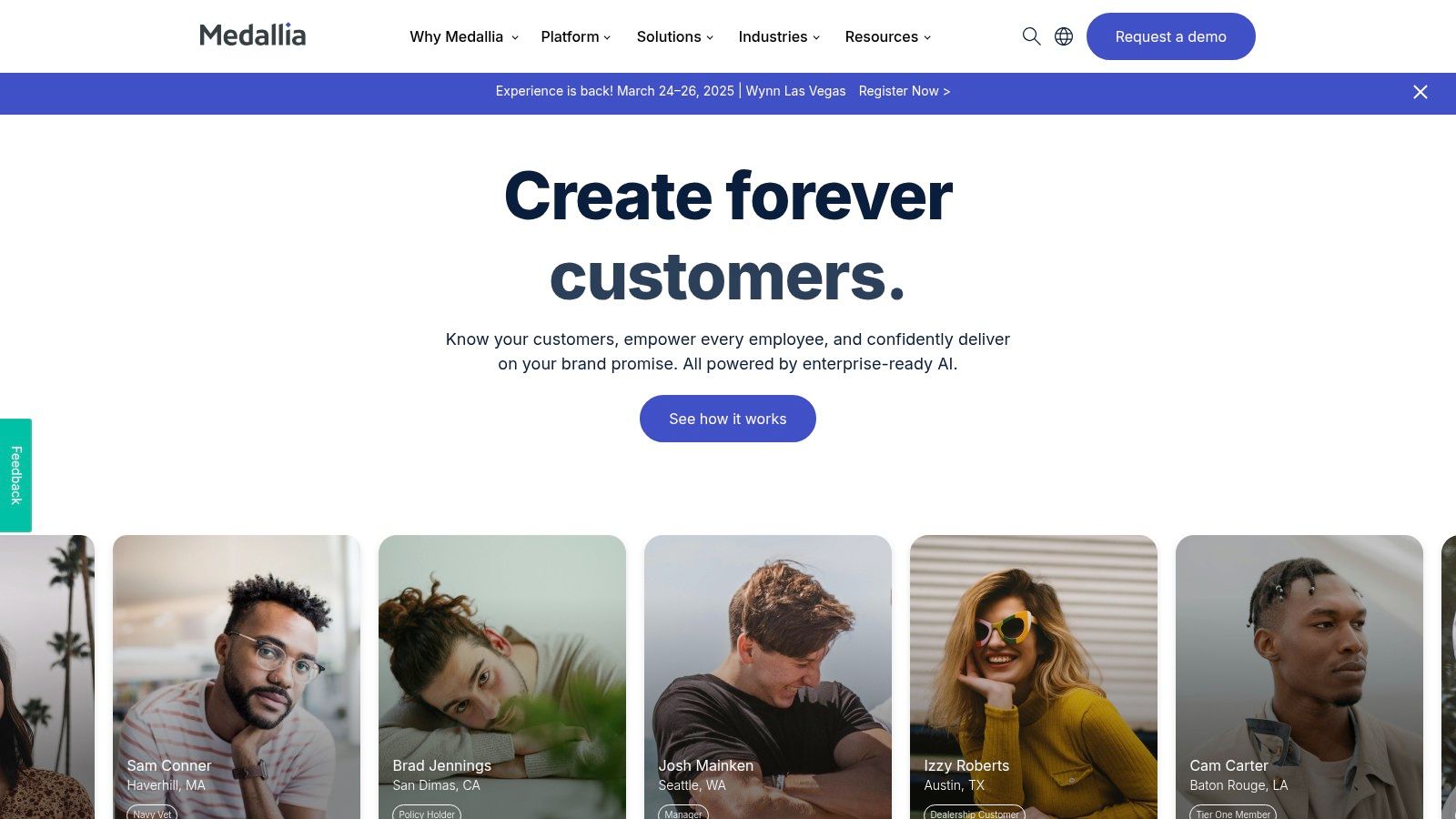
Medallia is a full-featured customer experience management platform built for large organizations. It excels at collecting and analyzing customer feedback across multiple channels, giving businesses clear data to act on quickly. While packed with features, its enterprise focus makes it less practical for smaller companies.
Key Features and Benefits:
-
Multi-Channel Feedback: Collect customer input through surveys, social media, email, SMS, and in-app channels. This gives support teams a complete view of customer sentiment and helps track the full customer journey.
-
Smart Analytics: Uses AI to spot patterns and predict future customer needs based on existing data. Support teams can plan resources better and get ahead of potential issues.
-
Quick Alerts: Get immediate notifications about urgent customer feedback, so teams can address problems before they grow. Perfect for support managers monitoring team performance.
-
Custom Dashboards: Each team member sees relevant data tailored to their role, from frontline staff to executives. Makes it simple to track key metrics and spot trends.
-
Strong Mobile Tools: Full-featured mobile apps let teams collect and analyze feedback on the go. Essential for field service teams and traveling executives.
Pros:
- Complete Solution: Offers all the tools needed for enterprise customer experience management
- Mobile-Ready: Well-designed apps make it easy to use on any device
- Smart Features: AI-powered analysis helps find deeper insights in customer data
Cons:
- High Cost: Price point aims at large enterprises, putting it out of reach for many small businesses
- Complex Setup: Getting started takes significant time and technical know-how
- Limited Flexibility: Some aspects aren't as customizable as other options
Tips for Success:
- Set Clear Goals: Define exactly what you want to achieve before starting
- Focus on Training: Make sure your team knows how to use all key features
- Start Small: Roll out features gradually to avoid overwhelming users
Pricing: Contact Medallia's sales team for custom pricing.
System Needs: Cloud-based platform with specific requirements based on chosen features.
Medallia stands out for enterprises that need deep customer experience insights. It works best for larger organizations with dedicated resources and budgets. While the investment is substantial, its ability to gather and analyze feedback across channels makes it valuable for companies serious about improving customer experience through data.
4. SurveyMonkey: User-Friendly Survey Tools for Better Insights
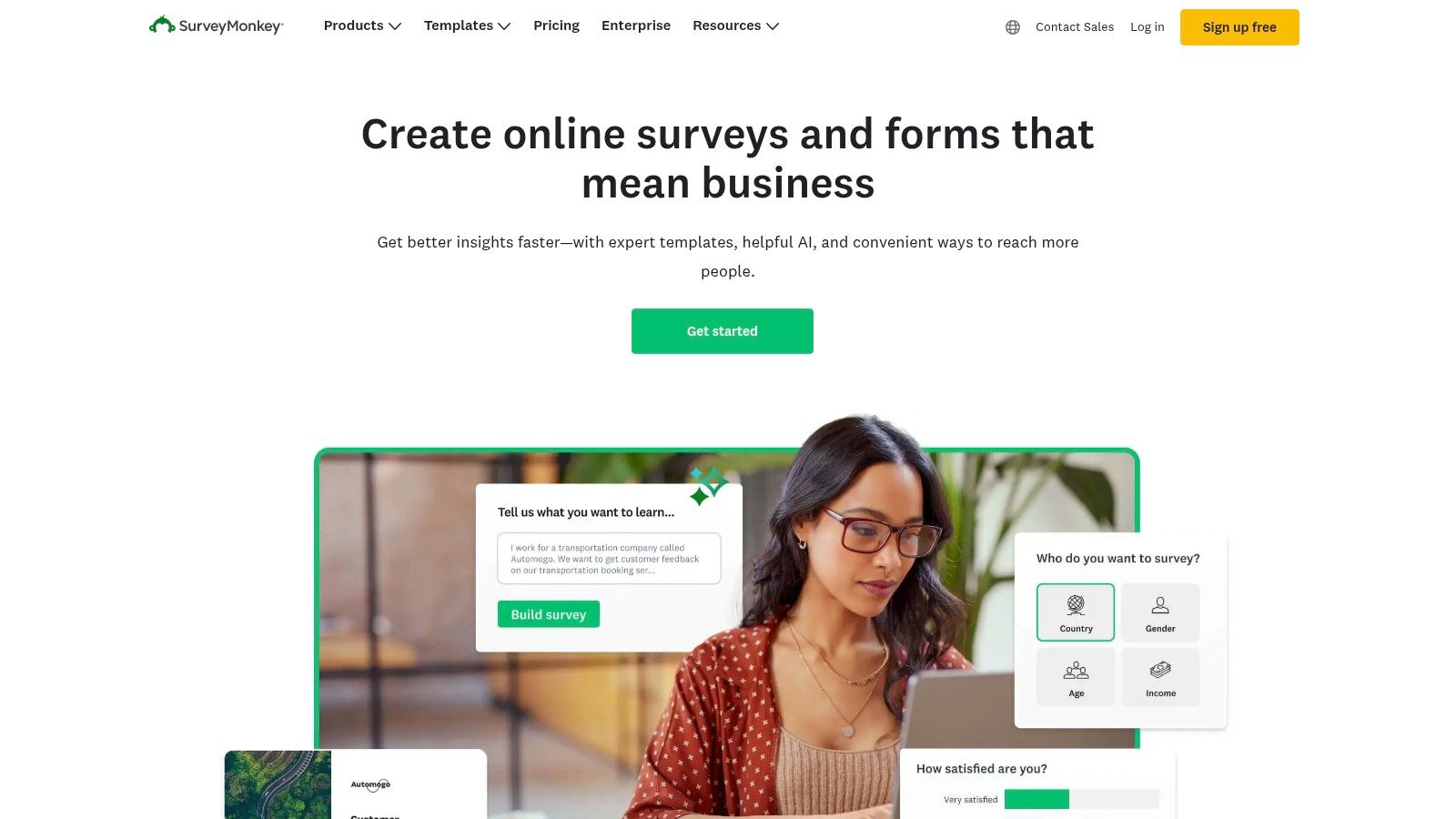
SurveyMonkey stands out as a practical solution for gathering customer feedback. Its simple interface makes survey creation quick and straightforward, serving everyone from Customer Service Managers checking satisfaction scores to Small Business Owners tracking NPS metrics.
You can set up and launch surveys in minutes using SurveyMonkey's pre-built templates for common needs like customer feedback and event evaluations. The platform lets you customize surveys to match your brand while ensuring they work smoothly on mobile devices to help maximize response rates.
Key Features & Benefits:
- Ready-to-use templates: Start quickly with pre-made surveys for different purposes
- Basic sentiment tracking: Get an overview of customer feelings from open-ended answers
- Cross-tab reporting: Break down responses by different groups to find patterns
- Mobile-friendly design: Surveys work well on phones and tablets
- Easy-to-use platform: Create surveys without needing technical skills
- Flexible pricing: Plans available for different budgets
- Quick launch: Get started in minutes
Pros & Cons:
- Pros: Simple to use, budget-friendly options, fast setup, helpful support materials
- Cons: Basic features compared to enterprise tools, simple analytics, limited customization in lower-tier plans
Pricing: Options range from free basic accounts to paid plans with more features and higher response limits. Check their website for current prices.
Technical Needs: Works in any modern web browser with internet access.
Similar Tools: While great for basic surveys, tools like Qualtrics and Typeform offer more advanced options like complex question logic and detailed reporting. Consider these if you need more sophisticated features.
Setup Tips:
- Set clear goals: Know what information you want before making your survey
- Start with templates: Modify existing templates to fit your needs
- Check your work: Preview surveys on different devices
- Share widely: Distribute your survey through multiple channels
- Review results: Use the reporting tools to spot trends
Website: SurveyMonkey.com
SurveyMonkey works well for anyone wanting to collect feedback without complications. It's particularly good for beginners or teams with modest budgets. While it may not have all the advanced features of higher-end options, it handles the basics effectively and helps you gather useful insights to improve customer experiences.
5. Clarabridge
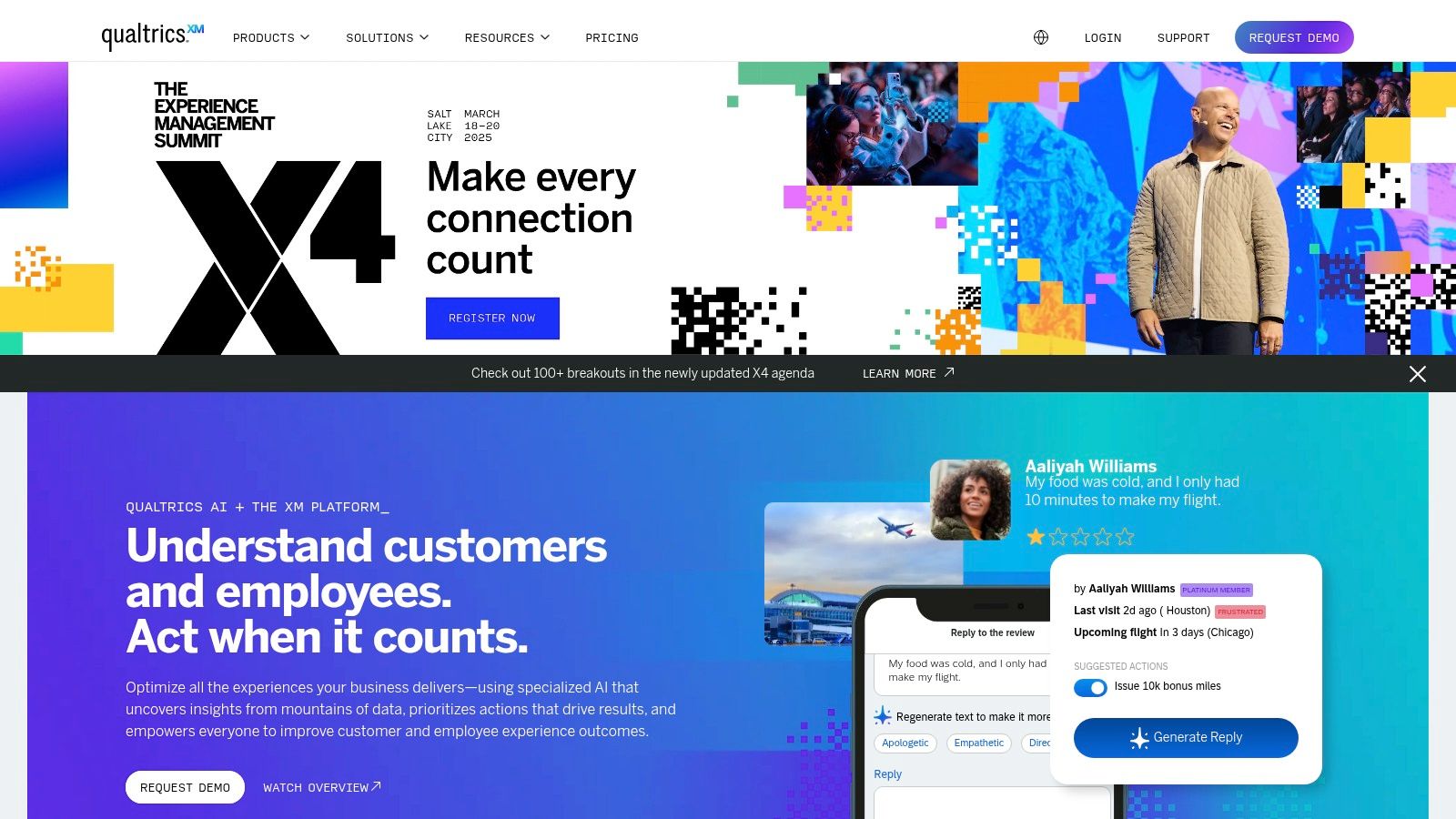
Clarabridge combines AI and natural language processing to help organizations understand their customer feedback. Their platform digs deep into feedback from all channels – surveys, social media, emails, and chat logs – to uncover insights about customer feelings, needs, and priorities.
Why Clarabridge Made Our List:
While not the cheapest option, Clarabridge excels at extracting meaning from customer feedback. It looks beyond just what customers say to understand their emotions and intentions, making it particularly useful for enterprises wanting to really know their customers. The platform's clear reports and data visualizations make it simple to spot trends and drive improvements.
Core Features:
- Multi-language analysis: Process feedback in multiple languages – perfect for global brands needing consistent insights across regions
- Deep emotional insights: Identify specific customer emotions like frustration or delight, going deeper than basic positive/negative analysis
- Industry-specific tools: Ready-to-use models and categories for healthcare, finance, retail and other sectors
- Custom organization: Create your own categories and tags to sort feedback based on what matters to your business
- Clear reporting: Build custom dashboards and visual reports to track progress and share findings
Advantages:
- Smart text analysis: Gets to the heart of what customers are really saying
- Detailed reporting: Creates thorough reports with metrics that matter to you
- Clear visuals: Makes complex data easy to understand and act on
Disadvantages:
- Higher cost: Premium features mean higher pricing that may not suit smaller companies
- Complex setup: Getting started takes time and technical know-how
- Learning curve: Users need data analysis skills to get full value from advanced features
Setup Tips:
- Plan your goals: Define exactly what you want to learn before you begin
- Train your team: Make sure staff know how to use the key features
- Start small: Test with a focused project before rolling out widely
Compared to Others:
Unlike basic survey tools like Qualtrics or SurveyMonkey, Clarabridge specializes in deep text analysis. While those tools work well for collecting and reviewing surveys, Clarabridge reveals deeper patterns in customer feedback. For thorough sentiment analysis across channels, it's worth considering – just factor in the cost and setup needs.
Pricing:
Contact Clarabridge's sales team for custom pricing based on your needs.
Website: https://www.clarabridge.com
6. Typeform: Engaging Surveys for Actionable Insights
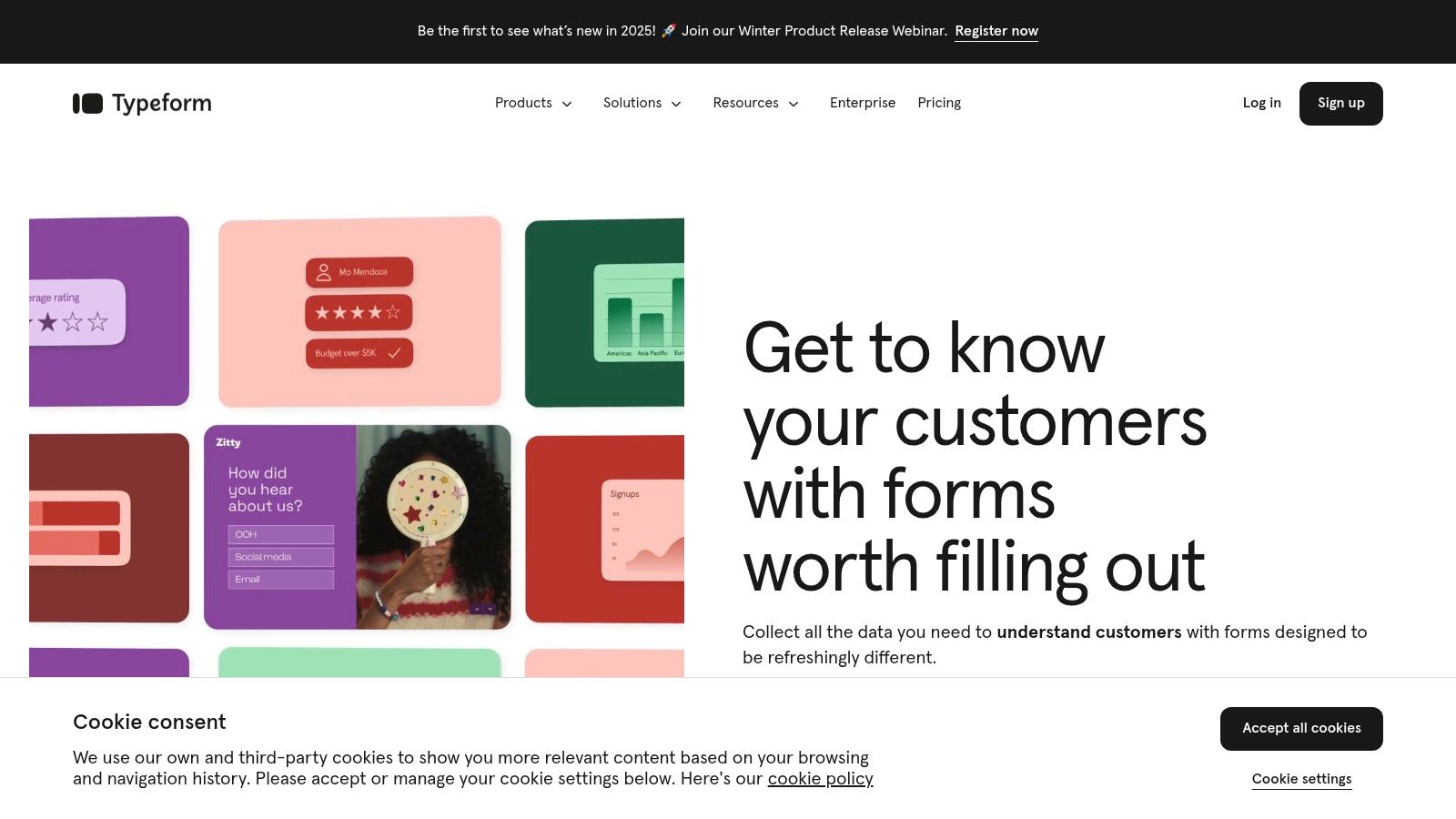
Typeform offers a fresh perspective on survey tools through its clean interface and conversational survey approach. The platform excels at creating engaging forms that people actually want to complete. It's particularly well-suited for Customer Service Managers, Support Team Leaders, and Small Business Owners who need quick, clear feedback from their customers.
The platform shines in collecting quality responses through interactive forms. Using smart features like question branching and calculations, you can create surveys that adapt based on previous answers. For example, when someone reports an issue, the survey automatically shows relevant follow-up questions. This creates more meaningful conversations compared to basic surveys. The tool connects smoothly with Slack, Google Sheets, and Mailchimp, making it simple to collect and analyze responses.
Practical Applications:
- Customer Satisfaction Surveys (CSAT): Measure customer happiness after support interactions or purchases
- Net Promoter Score (NPS) Surveys: Track customer loyalty and find potential advocates
- Product Feedback Surveys: Get direct input on features and usability
- Lead Generation Forms: Create forms that capture attention and leads
- Event Feedback Surveys: Collect insights to improve future events
Pros:
- Clean, Modern Design: The friendly interface helps boost survey completion rates
- Strong Response Rates: Interactive elements keep people engaged throughout the survey
- Simple to Use: Create surveys quickly with drag-and-drop tools – no technical skills needed
Cons:
- Basic Analytics: While it shows helpful data visuals, you may need other tools for deeper analysis
- Cost Per Response: Prices can add up for surveys with many responses
- Limited Reporting: The basic reporting tools may not satisfy complex analysis needs
Pricing: Plans start at $25/month, with a free option available for basic needs. Visit their website for current pricing details.
Technical Requirements: Works in any web browser – no downloads needed.
Comparison with Similar Tools: Unlike SurveyMonkey or Google Forms, Typeform emphasizes design and user experience over complex analytics. Choose Typeform when you want surveys that look great and engage respondents.
Implementation/Setup Tips:
- Use Templates: Start with pre-made templates to save time
- Add Logic Jumps: Create smart surveys that skip irrelevant questions
- Connect Your Tools: Link Typeform to your existing software to streamline data collection
Typeform stands out by making surveys more human and engaging. While it may not be the top choice for complex data analysis, it excels at gathering honest feedback through a smooth, enjoyable experience. The platform helps you collect valuable insights while keeping your respondents happy and engaged.
7. GetFeedback
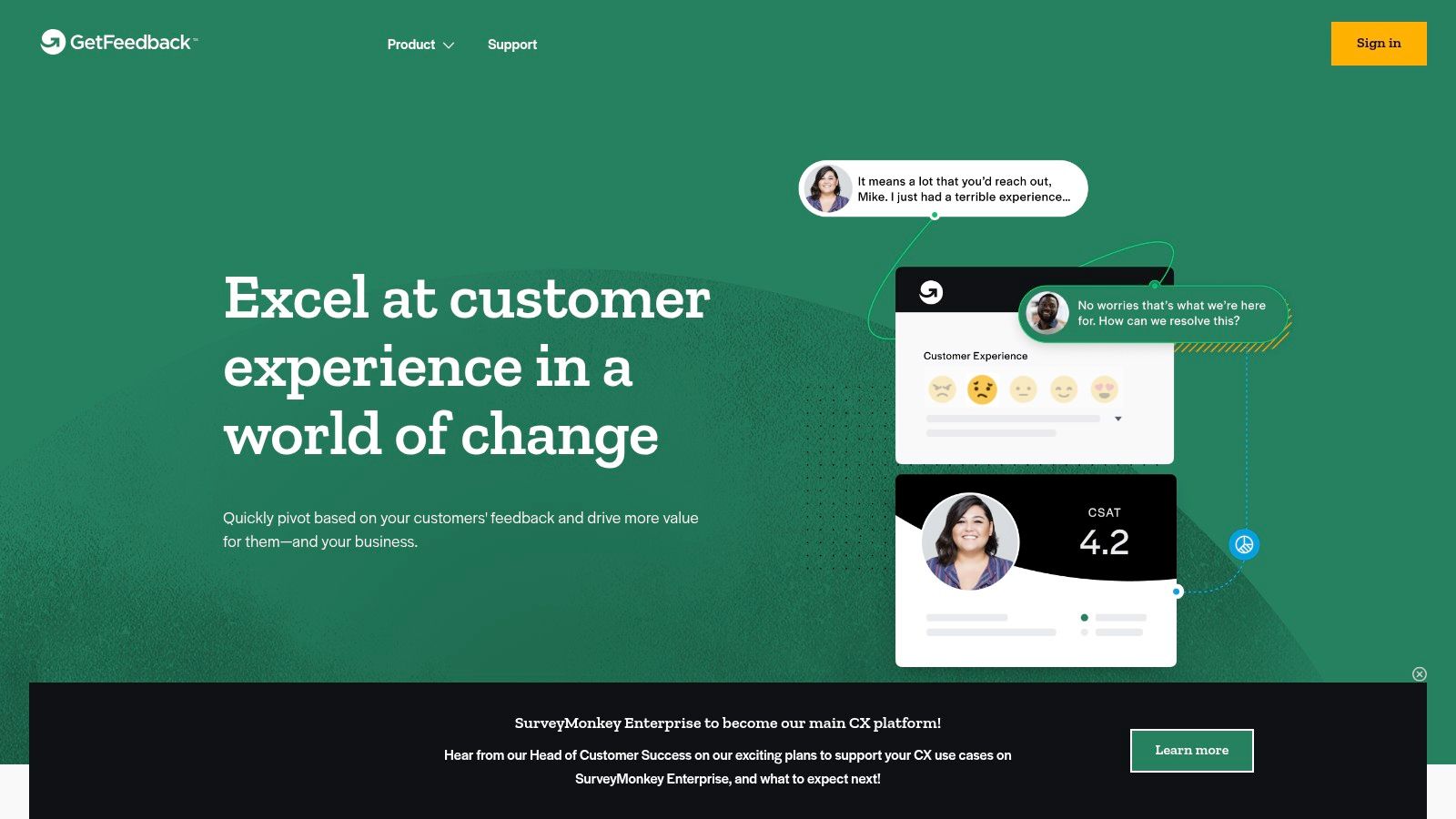
GetFeedback is designed specifically for Salesforce users, providing focused customer feedback capabilities that integrate directly with Salesforce data. For companies that rely heavily on Salesforce for customer management, GetFeedback offers a natural way to gather and analyze customer input.
The platform really shines for support teams using Salesforce. You can automatically send satisfaction surveys after support cases close or trigger feedback requests at key moments in the customer journey. All feedback ties back to your existing customer records, giving you a complete view of each customer's experience.
Small business owners using Salesforce can track important metrics like Net Promoter Score (NPS) to understand how customers feel about their products and services. Support managers can use the automated feedback tools to monitor team performance and spot areas where additional training may help.
Key Features:
- Built for Salesforce: Works seamlessly with your existing Salesforce data and processes
- Journey Mapping: See and analyze customer interactions across all touchpoints
- Automated Surveys: Set up feedback requests to trigger based on specific Salesforce events
- NPS Tracking: Monitor customer loyalty scores over time
Pros:
- Salesforce Integration: Works smoothly within the Salesforce platform you already use
- Simple Interface: Easy for non-technical users to navigate and use
- Quick Setup: Get started quickly with native Salesforce integration
Cons:
- Salesforce Required: Not useful for companies that don't use Salesforce
- Basic Analytics: Analysis tools are simpler compared to dedicated feedback platforms
- Higher Costs: Price point may be challenging for smaller organizations
Website: https://www.getfeedback.com
Implementation Tips:
- Map Your Journey: Identify the key customer touchpoints where feedback will be most valuable
- Customize Surveys: Create different surveys for different customer segments and interactions
- Use Automation: Set up automated triggers to consistently gather feedback
How It Compares:
While tools like Qualtrics and SurveyMonkey offer more extensive analytics, GetFeedback's strength is its deep Salesforce integration. For companies that run their business through Salesforce, GetFeedback provides a natural way to collect and use customer feedback. Companies not using Salesforce should explore other options from this list.
8. Birdeye
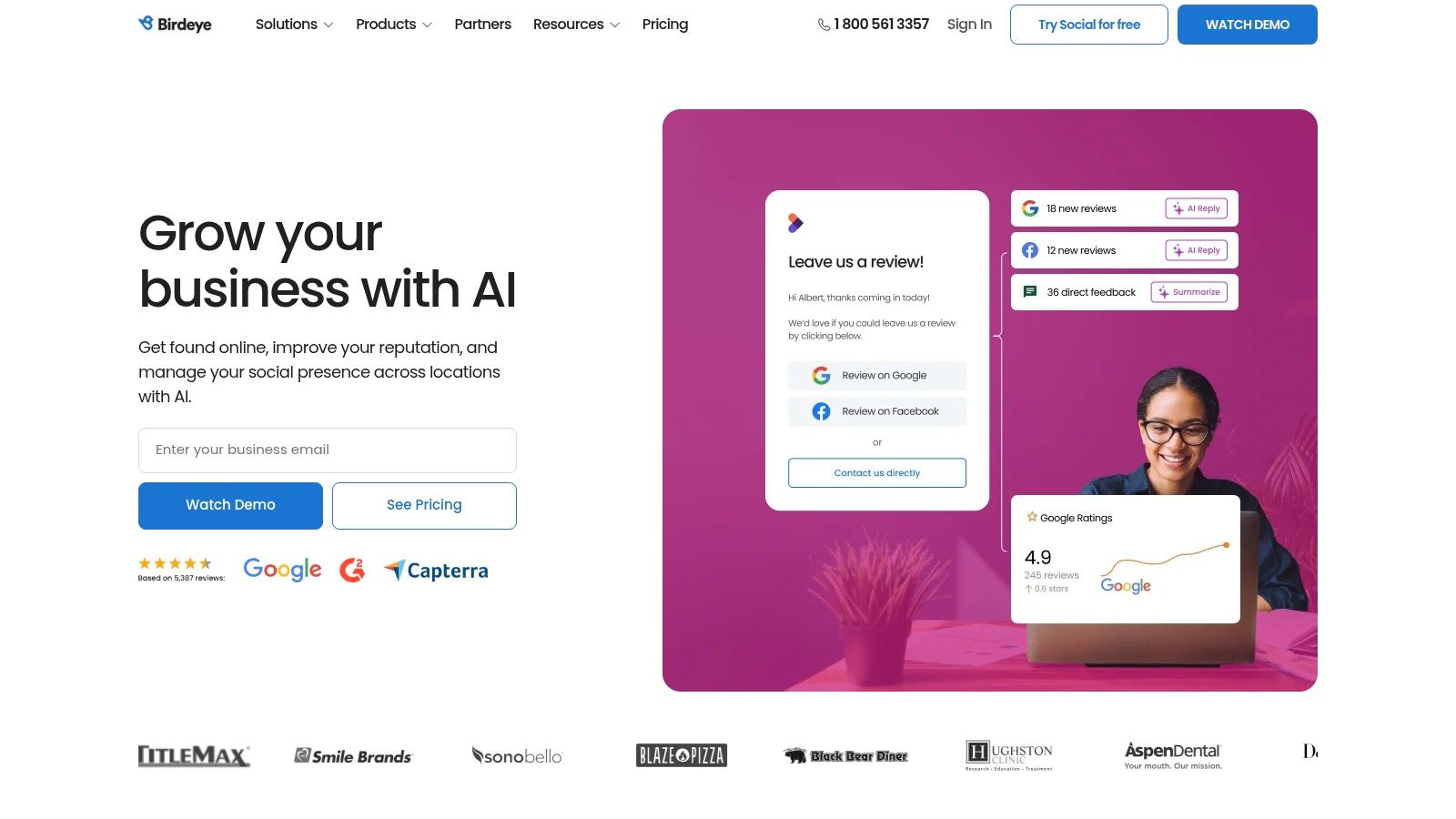
Birdeye is a reputation management and customer experience platform that helps businesses monitor and improve their online presence. The platform brings together review management, feedback collection, and customer insights in one central dashboard.
For businesses like restaurant chains with multiple locations, Birdeye offers valuable centralized control. You can track reviews across all your locations, quickly address negative feedback, and use positive reviews in your marketing. The platform also helps identify patterns in customer comments to guide service improvements.
Key Features & Benefits:
- Review Management: Monitor and respond to reviews from Google, Yelp, Facebook and other platforms directly through the dashboard
- Feedback Analysis: Advanced tools examine customer comments to uncover key trends and sentiment
- Competition Tracking: See how your online reputation measures up against competitors
- Local Search Optimization: Improve your visibility in local search results to attract nearby customers
Pros:
- Complete review solution: All the tools needed to handle online reviews in one place
- Multi-location features: Easy management of reviews and listings across multiple business locations
- Local focus: Strong features for businesses that rely on local customers
Cons:
- Review-centric: Survey capabilities are more basic compared to dedicated survey platforms
- Cost barriers: Pricing may be high for smaller businesses
- Limited surveys: Survey tools aren't as robust as specialized survey software
Pricing: Contact Birdeye's sales team for custom pricing based on business needs.
Technical Details: Cloud-based platform accessible through web browsers. No special technical requirements listed.
Setup Tips: When getting started, connect all your review platforms first. Make sure business information is consistent across listings. Set up notifications to stay on top of new reviews.
Comparison: While similar to Podium and ReviewTrackers, Birdeye excels at local SEO and managing multiple locations.
Birdeye works best for businesses focused on building their local reputation and managing customer feedback across multiple locations. Though the pricing and review-centric approach may not suit everyone, it provides solid tools for businesses that want to actively manage their online presence and improve customer experience.
9. AskNicely
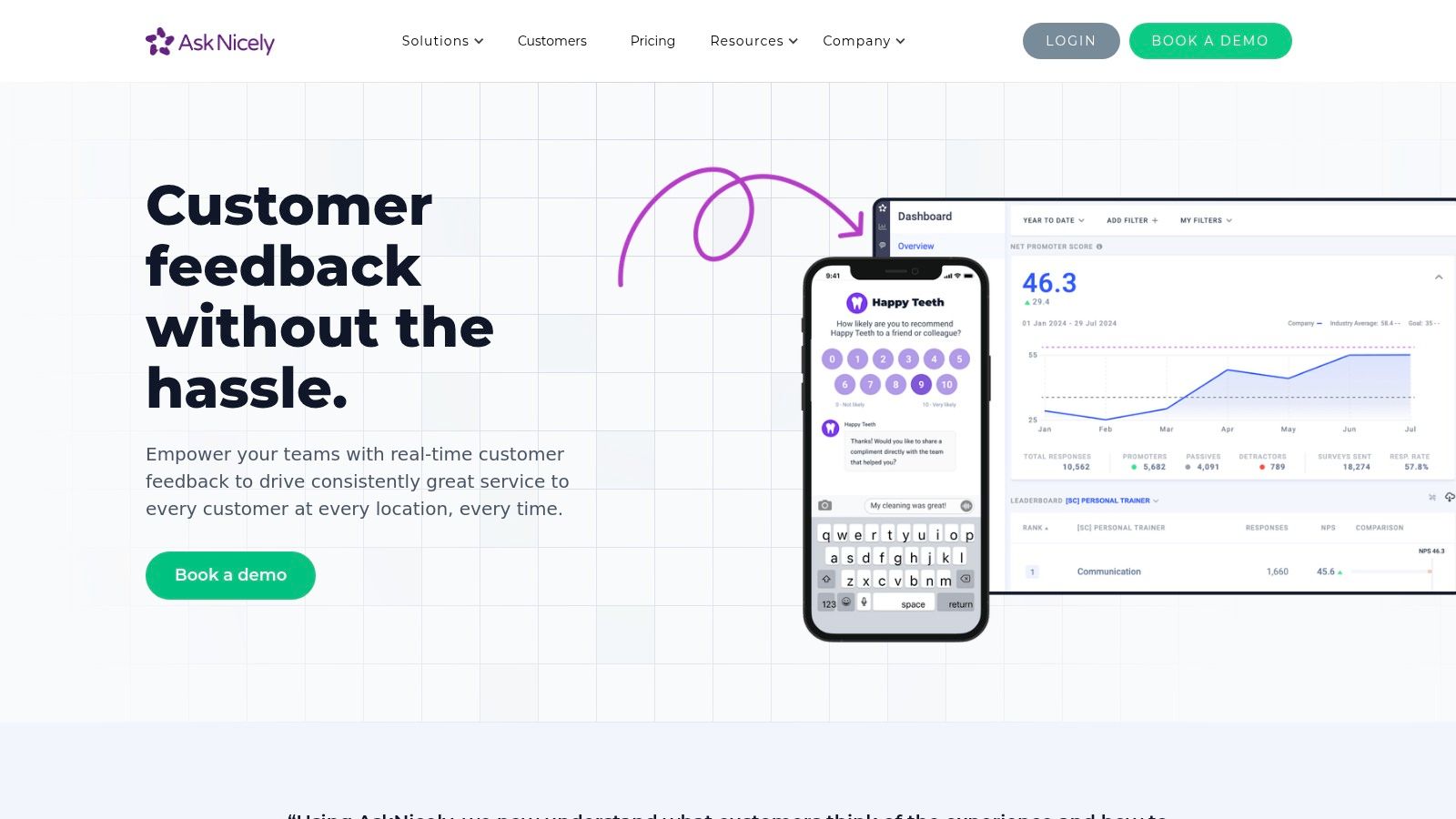
AskNicely specializes in collecting and analyzing Net Promoter Score (NPS) data. If NPS is your main customer experience metric, AskNicely provides the tools needed to gather feedback and take action in real-time. This makes it perfect for support teams and customer experience managers focused on building customer loyalty.
The platform centers on NPS surveys that you can trigger at key moments like after purchases, support interactions, or deliveries. One of its best features is instant feedback alerts that let teams quickly respond to negative feedback and build on positive experiences. This rapid response helps convert unhappy customers into promoters.
AskNicely connects with popular CRM systems like Salesforce and HubSpot to segment customers by NPS scores and automate follow-up actions. For example, when someone gives a low score, the system can automatically create a support ticket or notify managers. This helps teams solve problems quickly and boost satisfaction.
Features:
- NPS-focused surveys: Create and send NPS surveys through multiple channels
- Real-time feedback alerts: Get instant notifications when customers respond
- CRM integration: Connect with major CRM platforms for automated workflows
- Automated follow-up: Trigger actions based on NPS scores
Pros:
- Easy to use: Simple interface and quick setup process
- NPS expertise: Specialized tools for NPS measurement and analysis
- Smart automation: Automated workflows ensure quick responses to feedback
Cons:
- Limited survey options: Focuses mainly on NPS rather than other survey types
- Basic reporting: Analytics features are simpler compared to other platforms
- NPS-specific: May not suit companies needing broader feedback tools
Pricing: Contact AskNicely's sales team for custom pricing based on your needs.
Technical Requirements: Works in any modern web browser with internet access.
Comparison with Similar Tools: While Delighted and Promoter.io also focus on NPS, AskNicely stands out with its real-time alerts and workflow automation. It's ideal for businesses that want to act quickly on feedback and integrate deeply with their CRM.
Implementation Tips:
- Set clear goals: Define what you want to achieve with NPS data before starting
- Connect your CRM: Link AskNicely to your CRM system for best results
- Personalize surveys: Adapt questions and messages to match your brand voice
Website: AskNicely
10. Delighted
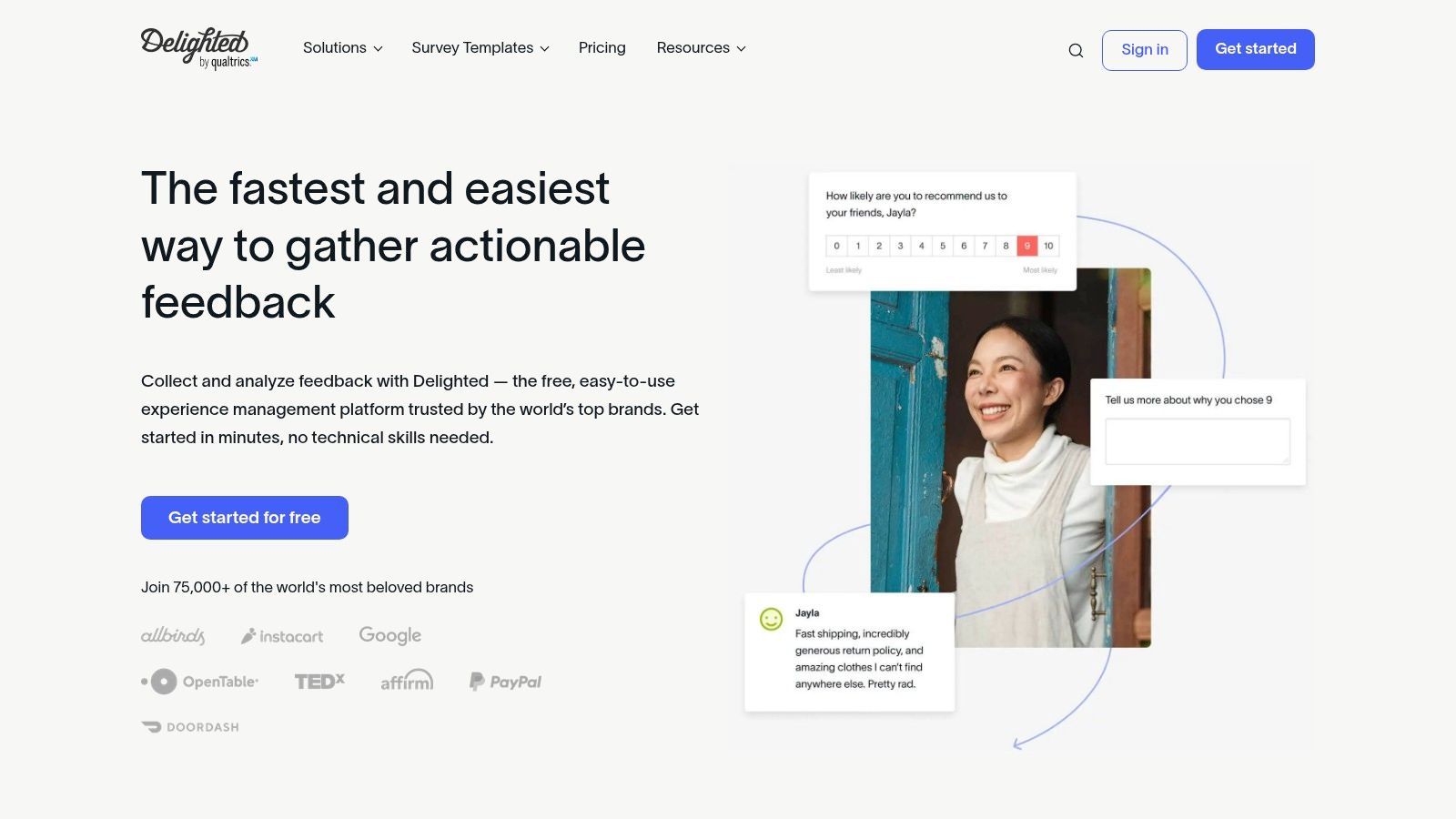
Delighted stands out for its straightforward approach to gathering customer feedback. The platform makes it easy to set up quick surveys and start collecting responses right away, without complicated setup processes. Real-time feedback collection helps businesses track customer satisfaction and pinpoint areas that need improvement.
The platform's specialty is one-click surveys that customers can complete effortlessly. This simple approach leads to better response rates compared to longer questionnaires. Delighted supports key measurement tools like Net Promoter Score (NPS), Customer Satisfaction (CSAT), and Customer Effort Score (CES). All data appears in a clear dashboard that shows customer sentiment trends and lets you track how satisfaction changes over time.
For teams that need more advanced capabilities, Delighted offers API access to connect with CRM systems and other business tools. This integration gives a fuller picture of the customer journey and enables automatic actions based on feedback – like creating support tickets when customers report issues.
Practical Applications:
- E-commerce: Monitor satisfaction after purchases and find ways to improve buying experience
- SaaS: Check customer response to new features and spot potential customer loss risks
- Support teams: Track customer effort scores after support interactions
- Small Businesses: Get quick feedback on products and services
Pros:
- Quick Setup: Get surveys running fast, even without technical knowledge
- User-Friendly Interface: Easy-to-navigate dashboard for viewing feedback
- Cost-Effective: Plans work for different business sizes and budgets
Cons:
- Basic Survey Options: Limited customization for those wanting complex surveys
- Simple Reports: Analysis focuses on high-level trends rather than detailed insights
- Limited Features: Missing some advanced tools found in bigger platforms
Pricing: Free plan available for basic use. Paid plans vary by survey volume and features needed. See website for current rates.
Technical Requirements: Works through web browsers. API setup needs technical skills.
Comparison to Other Tools: While Qualtrics and SurveyMonkey offer more features, Delighted wins for simple, fast feedback collection.
Implementation Tip: Begin with your most important metrics and pick the right survey type. Keep surveys brief to get more responses. Use the API to connect with your CRM and create automatic workflows.
Website: https://delighted.com
Head-to-Head Comparison: Top 10 Customer Feedback Analysis Tools
| Tool | Ease of Use | AI Capabilities | Output Quality | Pricing | Best For | Standout Feature |
|---|---|---|---|---|---|---|
| 🏆 Supportman | ★★★★ | ★★★★ | ★★★★ | 💰Free trial | Intercom & Slack teams | Real-time Slack alerts & IQS |
| Qualtrics | ★★★ | ★★★★ | ★★★★ | 💰High | Enterprise experience | Advanced analytics |
| Medallia | ★★★ | ★★★★ | ★★★★ | 💰Expensive | Enterprise CX | Omnichannel insights |
| SurveyMonkey | ★★★★★ | ★★★ | ★★★ | 💰Affordable | Quick surveys | Pre-built templates |
| Clarabridge | ★★★ | ★★★★★ | ★★★★★ | 💰High | Deep text analysis | NLP & customization |
| Typeform | ★★★★ | ★★ | ★★★★ | 💰Moderate | Engaging surveys | Interactive design |
| GetFeedback | ★★★★ | ★★★ | ★★★ | 💰Mid-range | Salesforce users | Native Salesforce integration |
| Birdeye | ★★★★ | ★★★ | ★★★★ | 💰Varies | Local reviews | Comprehensive review management |
| AskNicely | ★★★★★ | ★★★ | ★★★ | 💰High | NPS feedback | Real-time NPS alerts |
| Delighted | ★★★★★ | ★★★ | ★★★★ | 💰Affordable | Quick surveys | One-click surveys |
you can notice better sentence structure, natural flow of ideas and less AI-like marketing terms, all while following proper content formatting with markdown:
Elevating Your Customer Experience with the Right Tools
Picking a customer feedback tool requires careful consideration of your specific business needs. Let's look at the main options – Qualtrics, Medallia, and SurveyMonkey each have different strengths. The best choice depends on your company size, feedback volume, and collection channels like email, surveys and social media. Some tools excel at specific areas – Birdeye handles reputation management well, while Typeform creates engaging surveys.
Before implementing any tool, get clear on your goals. What specific customer insights do you need? How will you use the data to improve? Make sure your team gets proper training on the platform. Most providers offer helpful onboading resources to get you started smoothly.
Consider your budget realistically. Tools range from free basic plans to full enterprise solutions with advanced features. Evaluate the return on investment you expect from each option. For example, Delighted works well for quick feedback, while GetFeedback provides deeper analysis tools. Pick what matches your resources.
Check how well the tool works with your current systems. Good integration with your CRM, helpdesk and other platforms saves time and helps you get more value from the feedback data.
Key Takeaways:
- Match your needs: Pick a tool that fits your size, feedback volume and channels
- Plan carefully: Set clear goals and train your team well
- Watch your budget: Choose features that deliver real value
- Connect your tools: Ensure smooth integration with existing systems
Want to start collecting actionable customer feedback today? SupportMan connects your Intercom ratings directly to Slack, giving your team instant feedback alerts. This helps you respond faster to unhappy customers and steadily improve your service. Try SupportMan free with no credit card needed and see the difference real-time feedback makes.


